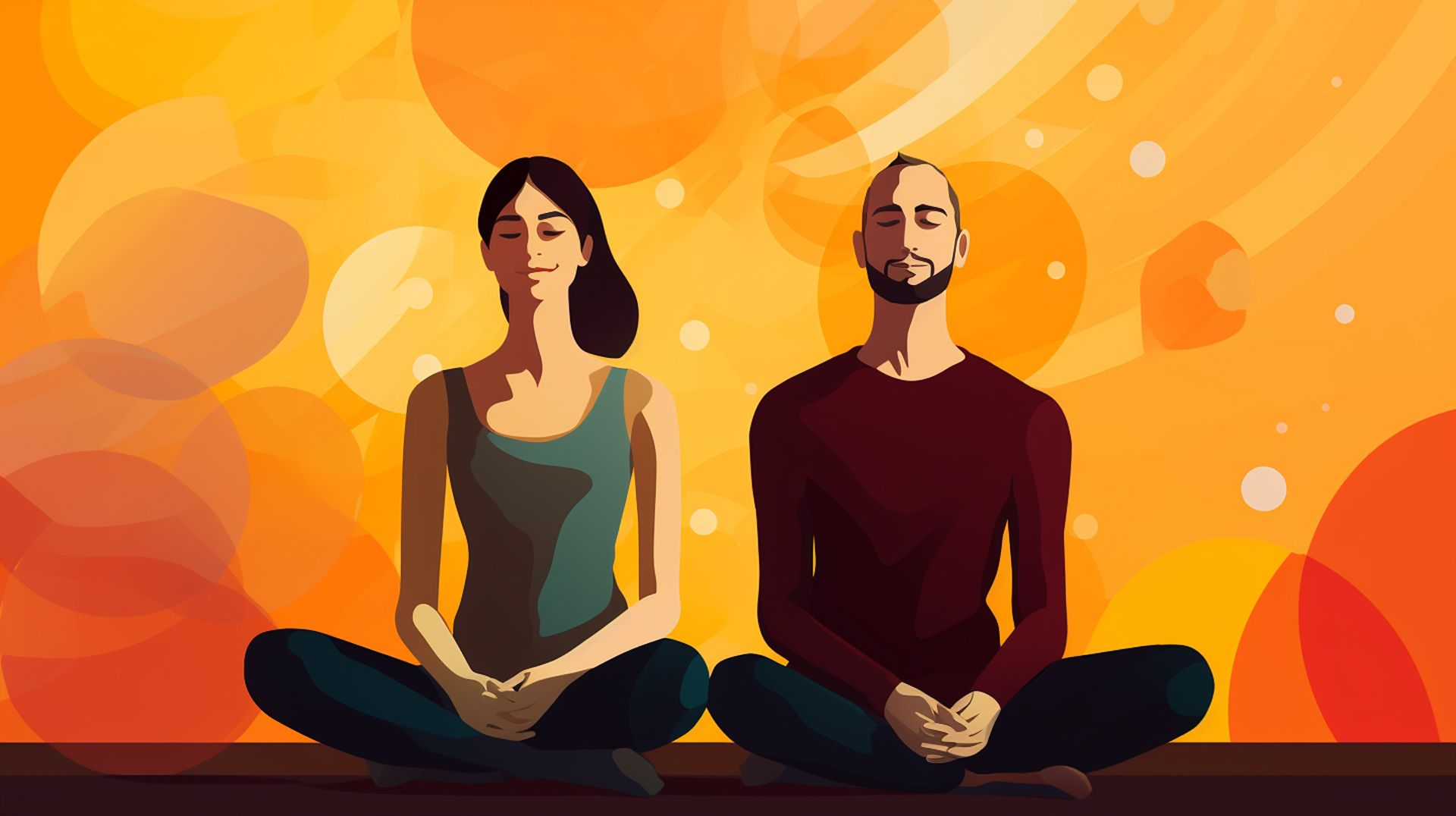Difference Between NSDR and Yoga Nidra (A Comprehensive Guide)
NSDR and Yoga Nidra are two paths leading to the oasis of relaxation.

In the quest for relaxation and mental restoration, NSDR (Non-Sleep Deep Rest) and Yoga Nidra stand out as two significant practices.
While they share some commonalities, their unique characteristics cater to different needs and preferences.
Let's explore:

Definition and Origin
Non-Sleep Deep Rest
NSDR (non-sleep deep rest) actually derives from the principles of Yoga Nidra.
The term NSDR was coined by neuroscientist Andrew Huberman, who recognized the potential of adapting the ancient practice of Yoga Nidra for modern use.
This connection highlights the deep-rooted effectiveness of relaxation techniques that have been refined over centuries.
Yoga Nidra
Yoga Nidra, often referred to as "yogic sleep," is an ancient meditative practice from the yoga tradition.
It guides practitioners into a deep state of relaxation and conscious awareness, situated at the border between being awake and asleep. This practice involves a systematic method of inducing complete physical, mental, and emotional relaxation, typically through guided meditation, and is known for its ability to foster profound rest and rejuvenation.

Similarities between Yoga Nidra and NSDR
Purpose of Relaxation and Restoration: Both Yoga Nidra and NSDR are designed to achieve deep relaxation and mental restoration, providing a much-needed break from the constant stimulation of daily life.
Reduction of Stress and Anxiety: These practices are effective in reducing stress and anxiety levels, promoting a sense of calm and peace.
Enhancing Sleep Quality: Known for improving sleep quality, they are particularly beneficial for individuals with sleep issues.
Mind-Body Connection: Both strengthen the mind-body connection, enhancing awareness of physical and mental states.
Non-Focused Awareness: They involve a state of non-focused awareness, allowing the mind to drift without specific focus.
Accessibility and Ease of Practice: Both are accessible to individuals of all skill levels and do not require physical exertion.

Differences between Yoga Nidra and NSDR
Origins and Cultural Context: Yoga Nidra has its roots in yogic traditions and includes a spiritual aspect, while NSDR is a modern, secular practice.
Guidance and Structure: Yoga Nidra follows a structured protocol with guidance, including Sankalpa (intention setting) and visualization. NSDR offers more flexibility and can be self-guided.
Integration in Daily Life: NSDR is easier to adapt to fast-paced lifestyles due to its flexibility.
Specific Techniques and Focus: Yoga Nidra includes specific techniques like Pranayama (breath control), while NSDR focuses on relaxing the mind without these techniques.
Spiritual Component: Yoga Nidra often includes elements of spiritual exploration, in contrast to the more secular approach of NSDR.

Additional Distinctions
Physical Positioning
Yoga Nidra is practiced in Savasana (corpse pose) to facilitate relaxation and awareness.
NSDR Can be done in various comfortable positions, adaptable to different environments.
Session Focus
Yoga Nidra involves a comprehensive approach, including intention setting, body scans, and visualization.
While NSDR mainly focuses on breathwork and body scans, emphasizing simplicity.
Accessibility and User-Friendliness
NSDR is designed to be simplified and user-friendly, making it accessible to anyone regardless of their experience with relaxation techniques.

Scientific Backing
While Yoga Nidra, an ancient practice, boasts extensive research validating its benefits, Non-Sleep Deep Rest (NSDR) emerges as a modern practice with similar techniques. Despite their parallels, it's important to note that the scientific research on NSDR is not as comprehensive as it is for Yoga Nidra or traditional meditation methods.
Here are some key findings from research on Yoga Nidra:
- Improves Total Sleep Time, Total Wake Duration, and Subjective Sleep Quality in Chronic Insomnia Patients: Yoga Nidra practice has been shown to enhance sleep quality in patients with chronic insomnia (Datta et al., 2021).
- Increases Sleep Efficiency and Deep Sleep Delta MicroV2 Values: It improves sleep efficiency and the quality of deep sleep, contributing to overall better sleep (Datta et al., 2023).
- Significantly Improves Sleep Quality in Hypertensive Patients: Yoga Nidra has been found to enhance sleep quality specifically in individuals with hypertension (Rajagopalan, Krishna, & Mukkadan, 2022).
- Enhances Relaxation, Facilitates Sleep, Eases Anxiety, and Reduces Pain: It provides deep relaxation similar to sleep and helps in managing anxiety and pain (Sharpe et al., 2021).
- Improves Mental Health, Reducing Stress and Anxiety: Yoga Nidra contributes to better mental health by reducing stress and anxiety levels (Kumari & Karunaratne, 2022).
- Calms the Nervous System and Provides Profound Clarity and Awareness: It has a calming effect on the nervous system and enhances mental clarity and awareness (Kumar & Mallick, 2017).
- Decreases Anxiety and Improves Sleep and Quality of Life in Nurses: Specifically in the context of nursing, Yoga Nidra has been effective in reducing anxiety and improving both sleep quality and overall quality of life (Anderson et al., 2017).
NSDR: Hypothetical Benefits Based on Similarities
Given the similarities in practice and technique between NSDR and Yoga Nidra, it is hypothesized that NSDR could offer similar benefits.
However, it is crucial to underline that these benefits, while likely, are not yet substantiated by extensive scientific research specific to NSDR. As such, these inferred benefits should be regarded as speculative and indicative, rather than conclusive.

Closing Thoughts
NSDR and Yoga Nidra are two paths leading to the oasis of relaxation.
Whether you're seeking a quick mental coffee break or a profound spiritual journey, both practices offer valuable pathways to relaxation and restoration.